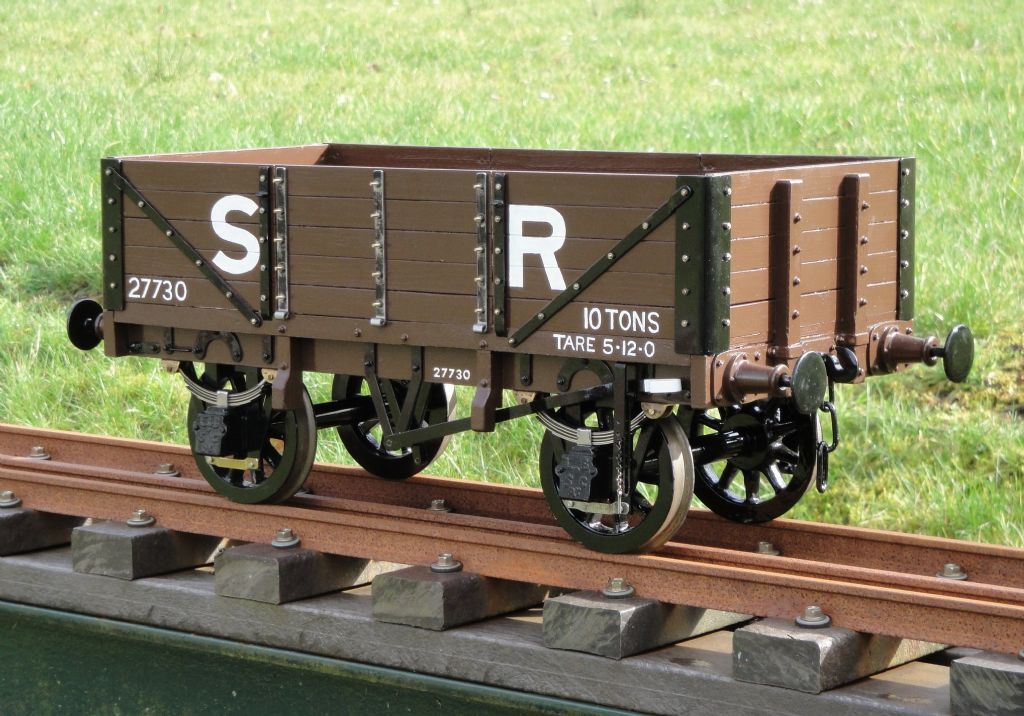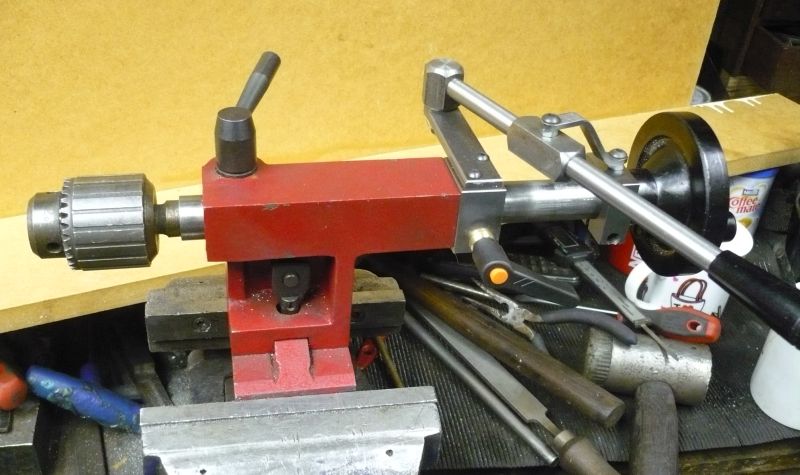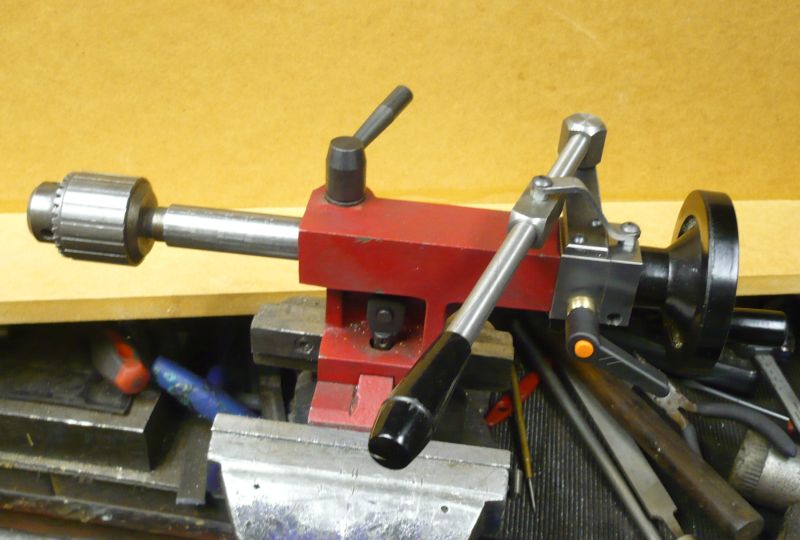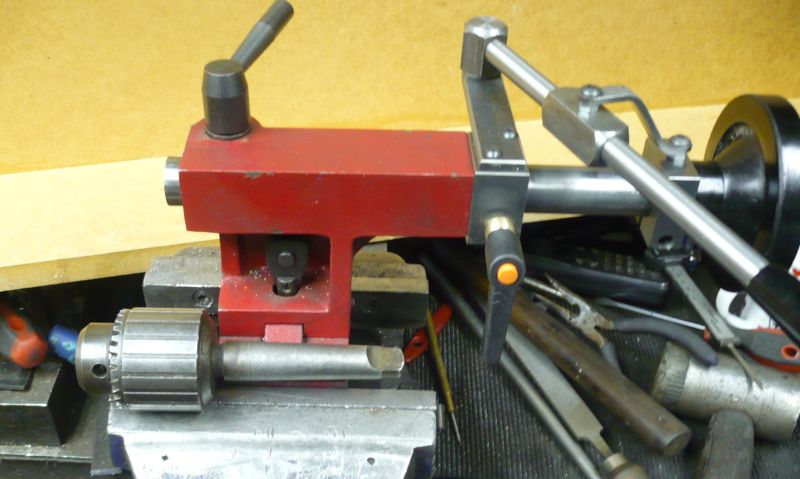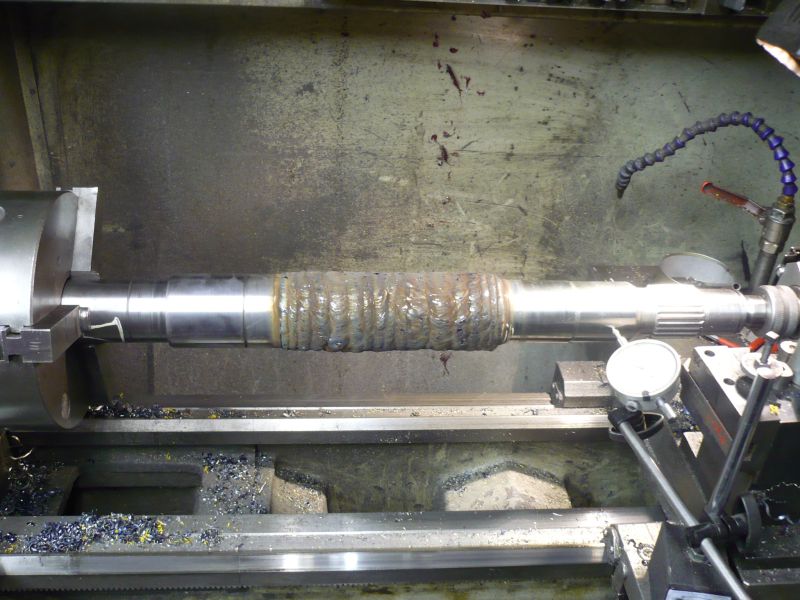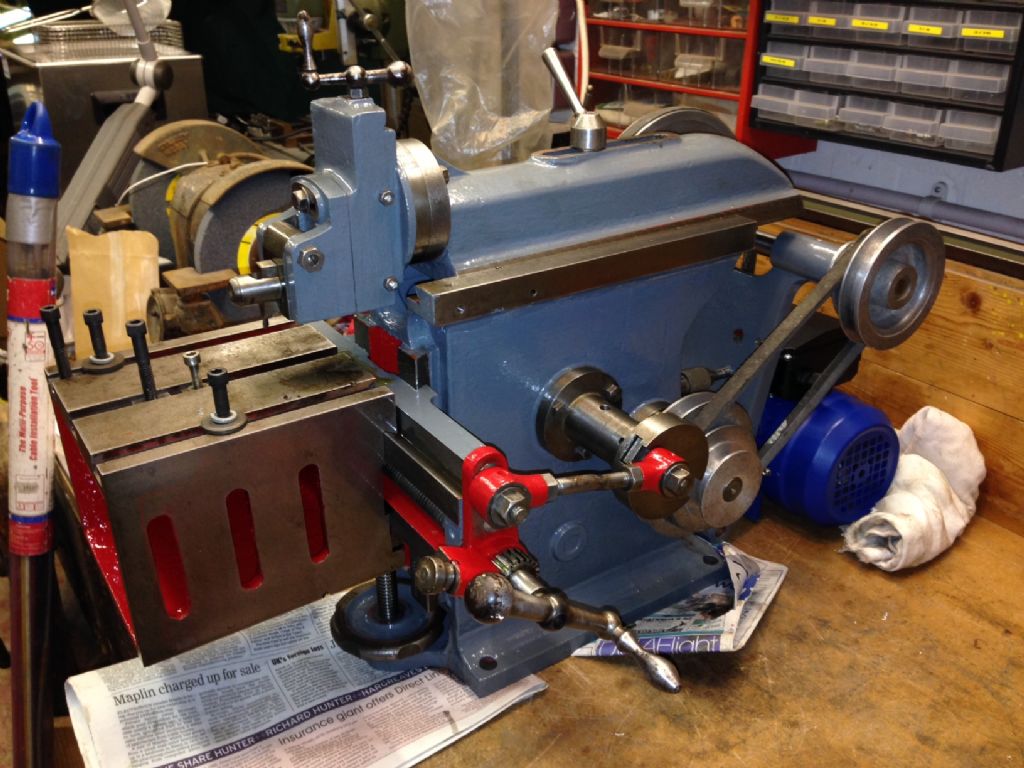I finally got a 1910 Humber 200 cc Side valve engine running, probably for the first time since the 1920's. An original barn find with a completely worn out engine that I was asked to restore.
Here it is just about ready for a test on the bench.

And another shot from different angle.

A lot of work was required to get it back into running order, this included making a new Con Rod, new cam followers, new push rods, & push rod guides, a complete set of fasteners and new bearings throughout.
I had no luck trying to remove the valve covers so I had no choice but to machine them out. Accurate set yup on the milling machine enabled me to machine away the body of the cover and leave just a very thin piece of it left which I was able to prize off from the top of the cylinder and then pull it out rather like they way you open a can of corned beef ,

This photo shows one of the covers after it had been machined out.

This photo shows how I was able to pull the remaining metal out just like opening a can of corned Beef.

A rather blurred shot of the second valve cover being machined out.

Preparing a fixture for holding the replacement valve covers.

A valve cover blank about to be machined.

Two valve covers almost finished.

The two replacement covers almost finished. Only the hex heads to be milled then Nickel plated to finish.

The replacement Con Rod.

A pile of bits and pieces including the Cam Followers and shaft (lower right).

The Engine nearly finished.
This engine being old has some unusual features that a lot of people probably haven't seen before. For instance the valves are not like conventional modern valves with a 45 degree sealing face, these valves have a flat sealing face that seats on a flat valve seat. (Imagine a mushroom, the seal being around the bottom of the mushroom cap).
The piston is cast iron, which was common in the early days of motoring, the piston ring was straight out of steam engine technology I believe it is of the Clupet type. No provision is made for adjusting valve clearances, the engine has to be assembled and the valves dropped in from the top and the valve stems ground until the desired clearance is obtained. Apparently some car engines were similar in the thirties. Rather than leave the owner with no adjustment I built up the engine with three cylinder base gaskets of .005" thickness so that if the valve clearance gets too much he can lift the cylinder, take out a gasket and not have to grind away the valve stems.
John Haine.


